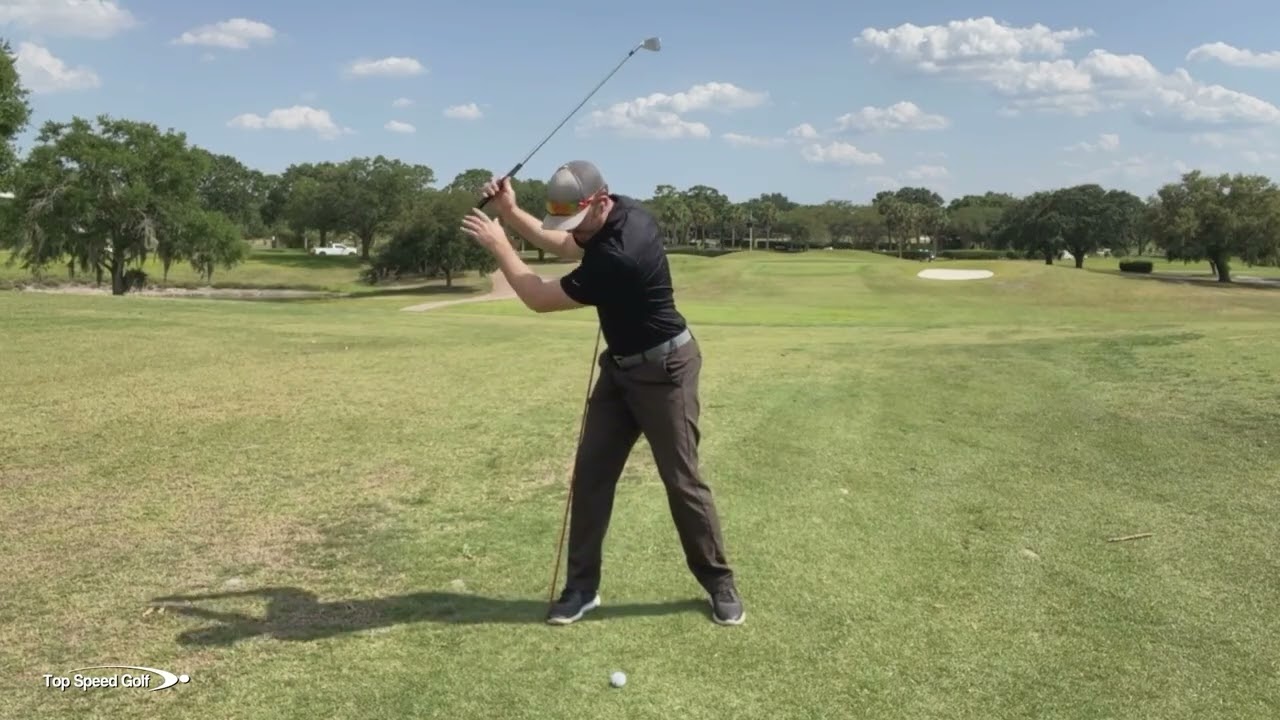
Struggling with inconsistency off the tee? Uncover the secret to a powerful and accurate golf swing by eliminating your hip sway. Learn how with our practical step-by-step guide that promises immediate improvements.
If your golf swing lacks consistency, a hidden hip sway might be to blame. Correct this flaw with a straightforward back leg drill, enhancing your rotation, preserving your spine angle, and preventing that unwanted flip at impact. Our guide offers detailed techniques to diagnose and fix hip sway, training your back leg with routine tools and translating that stability into your full swing for better accuracy and power.
Engage in practice drills, set clear checkpoints, and follow troubleshooting tips—all designed for easy use at the range or in your backyard. This actionable instruction ensures you see benefits right away.
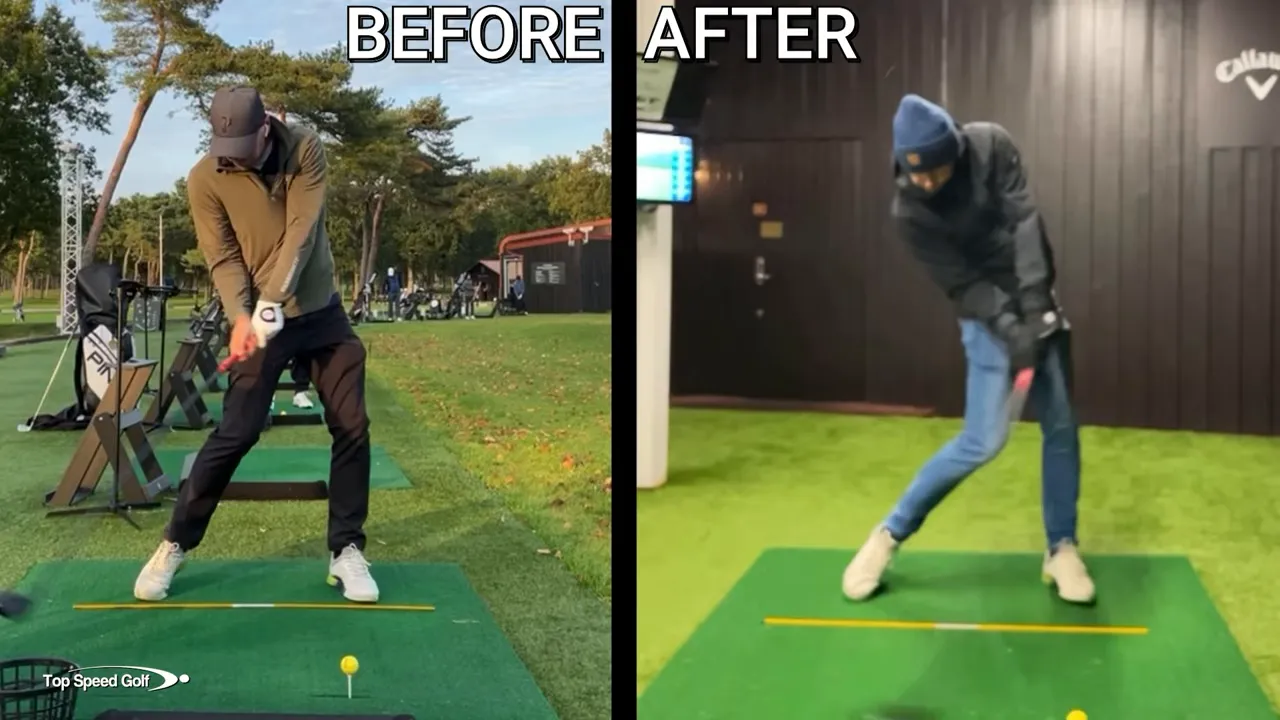
Table of Contents
- Identify Hip Sway in Your Golf Swing
- Measure Your Back Leg Movement
- Use an Alignment Stick to Fix Hip Sway
- Practice Backswing Rotations
- Transfer Stability to Full Swings
- Monitor Progress with Checkpoints
- Structure Your Practice Sessions
- Troubleshoot Common Mistakes
- How This Move Improves Your Driver
- Advanced Drill Variations
- Cues for Practice and Golf Rounds
- Video & Metrics for Improvement
- Build Long-Term Habits
- FAQs
- Final Thoughts and Next Steps
Identify Hip Sway in Your Golf Swing
Start by checking for hip sway. Stand in your driver setup, swing slowly, and note how your back leg moves from its initial position. Mark a vertical line behind your leg to identify excess movement, which can indicate hip sway and affect your ability to maintain spine angle and club stability.
Understanding your hip sway matters because if your back leg moves too far forward, your posture shifts, compromising your club face control at impact. By fixing leg stability, your spine angle remains consistent, enhancing swing repeatability and accuracy.
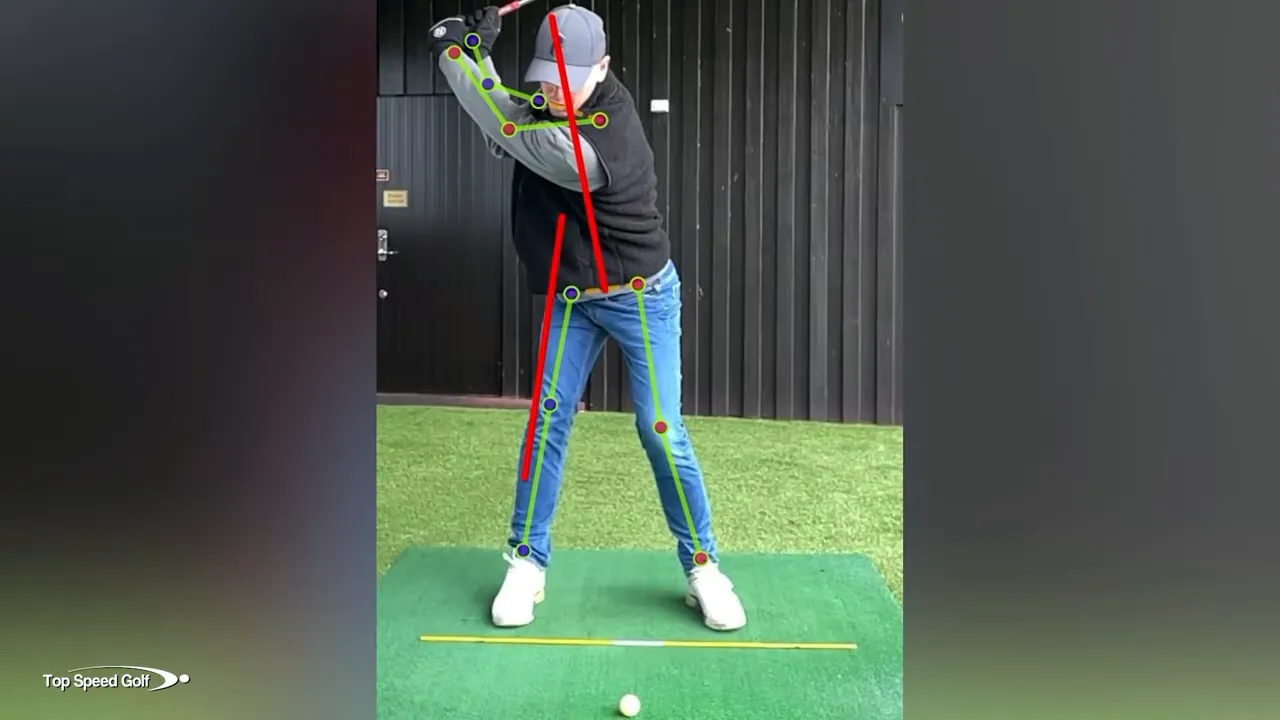
Measure Your Back Leg Movement
Visualize or mark a line off the back of your trailing leg. This line serves as a reference to determine if your leg breaks its position during the backswing. Adjust your setup to maintain alignment, using practice swings to observe leg movement past this visual guide.
The goal is to prevent leg drift while allowing rotational movement within a constrained area. This helps maintain your spine angle, reducing reverse pivot tendencies.
Use an Alignment Stick to Fix Hip Sway
Introduce a tangible drill to reinforce leg position. Place an alignment stick or similar object at mid-thigh height against your back leg. This object provides tactile feedback, helping prevent lateral slides during your backswing.
- Get into your stance and ensure a solid spine angle.
- Position the stick lightly at mid-thigh against your trailing leg.
The feedback from this setup guides you to maintain leg stability, ensuring consistent spindle and swing mechanics.
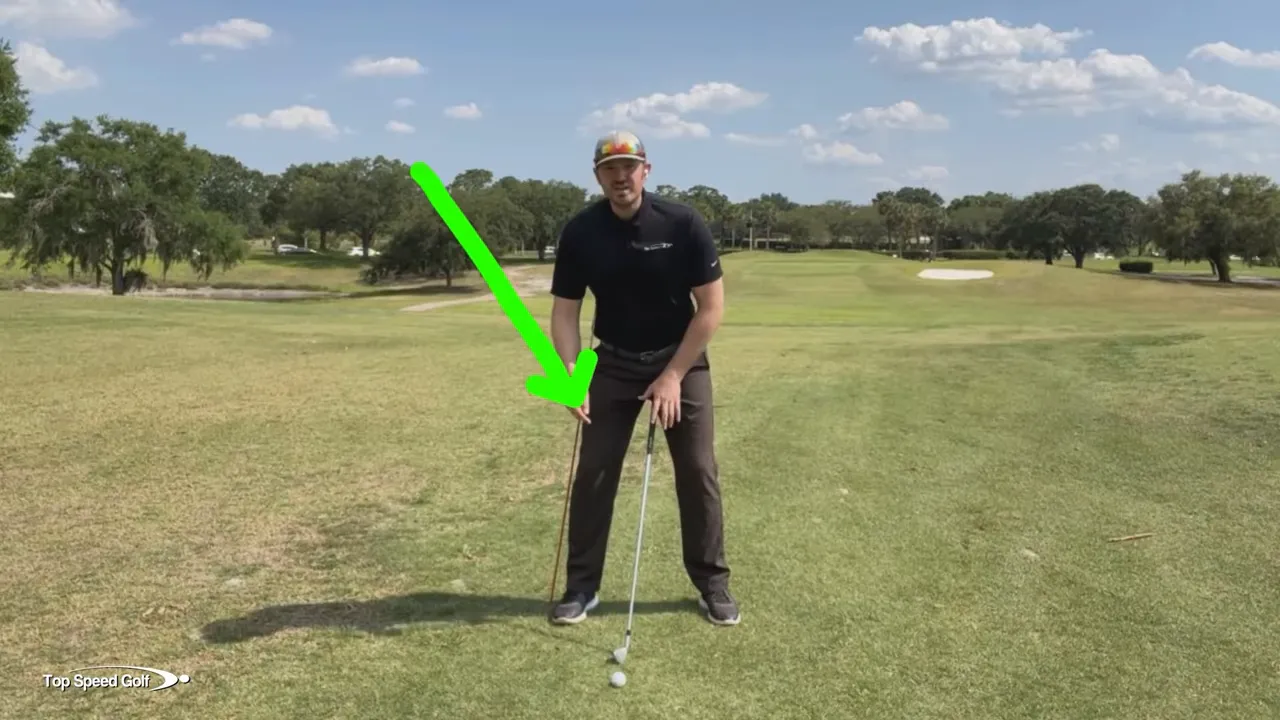
Practice Backswing Rotations
Perform backswing-only drills with the stick or chair, emphasizing full turns while maintaining leg position. The objective is muscle memory for rotation, not striking the ball, allowing your leg to stay back and your spine angle consistent.
- Keep your spine angle directed away from the target as you rotate.
- Rotate your hip and knee without changing your leg’s position.
Over time, these repetitions create a neuromuscular pattern where leg stability becomes second nature during your swing.
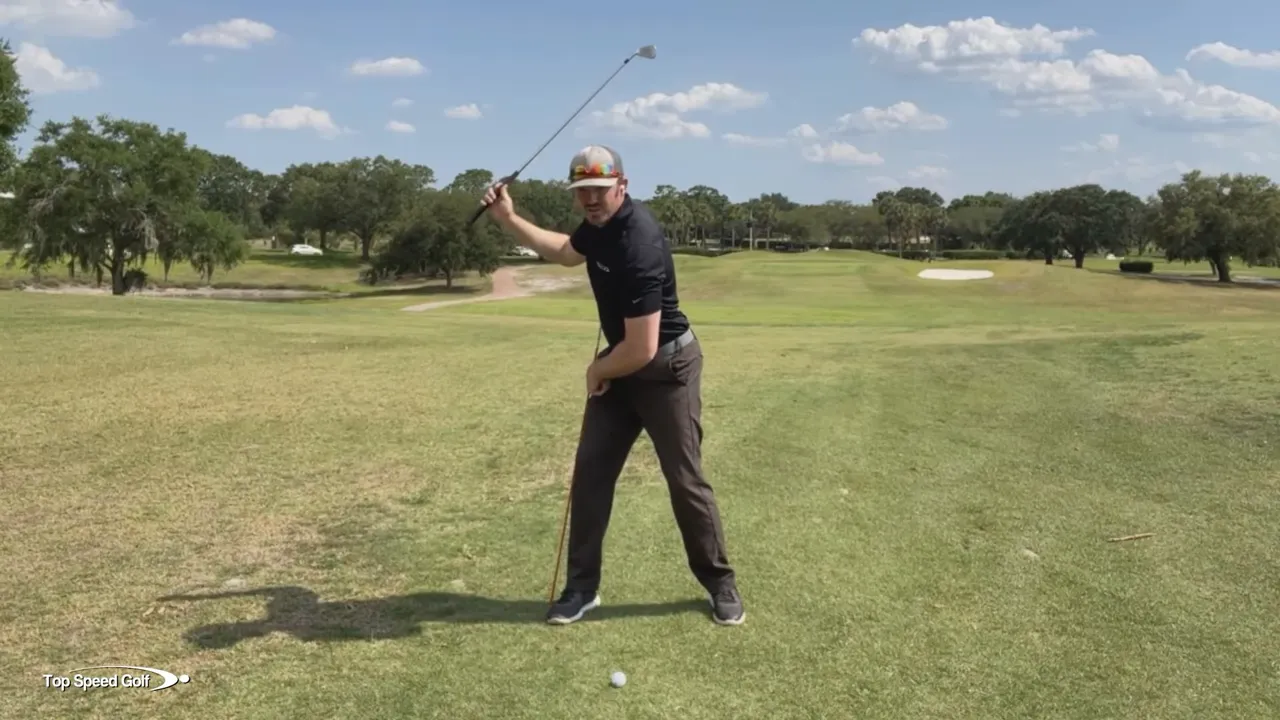
Transfer Stability to Full Swings
Once you’re consistently rotating without leg slide, remove the stick and transition the same feeling into controlled full swings. Visualize your leg within an ‘invisible fence’ to prevent drift while allowing necessary rotation.
This ‘fence’ imagery helps embed spine and leg alignment in your subconscious, making it easier to carry this stability into full-speed swings.
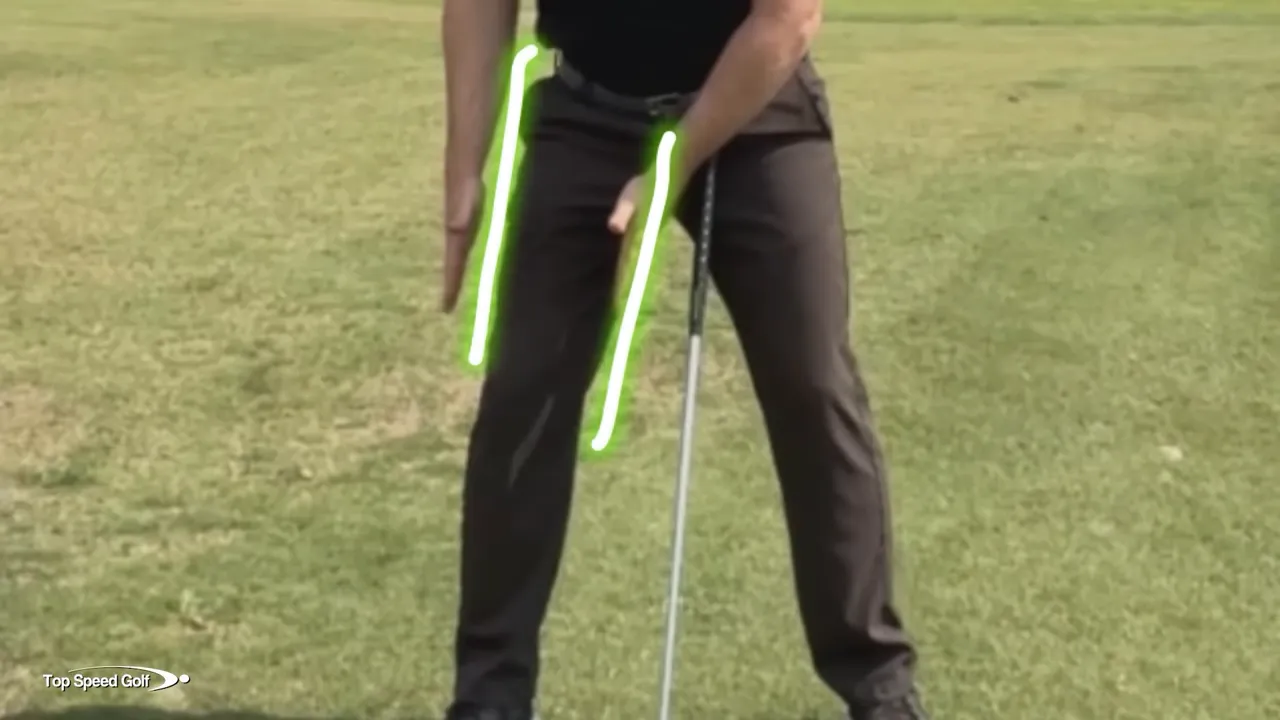
Monitor Progress with Checkpoints
Establish checkpoints to assess improvement using video or mirrors. Specifically, evaluate:
- Back leg position at the top of the backswing relative to your line.
- Maintained spine angle away from the target.
- Stable clubface through the downswing and impact.
Documenting these elements helps track progress, with a stable leg leading to better consistency in spine angle and reduced clubhead flip.
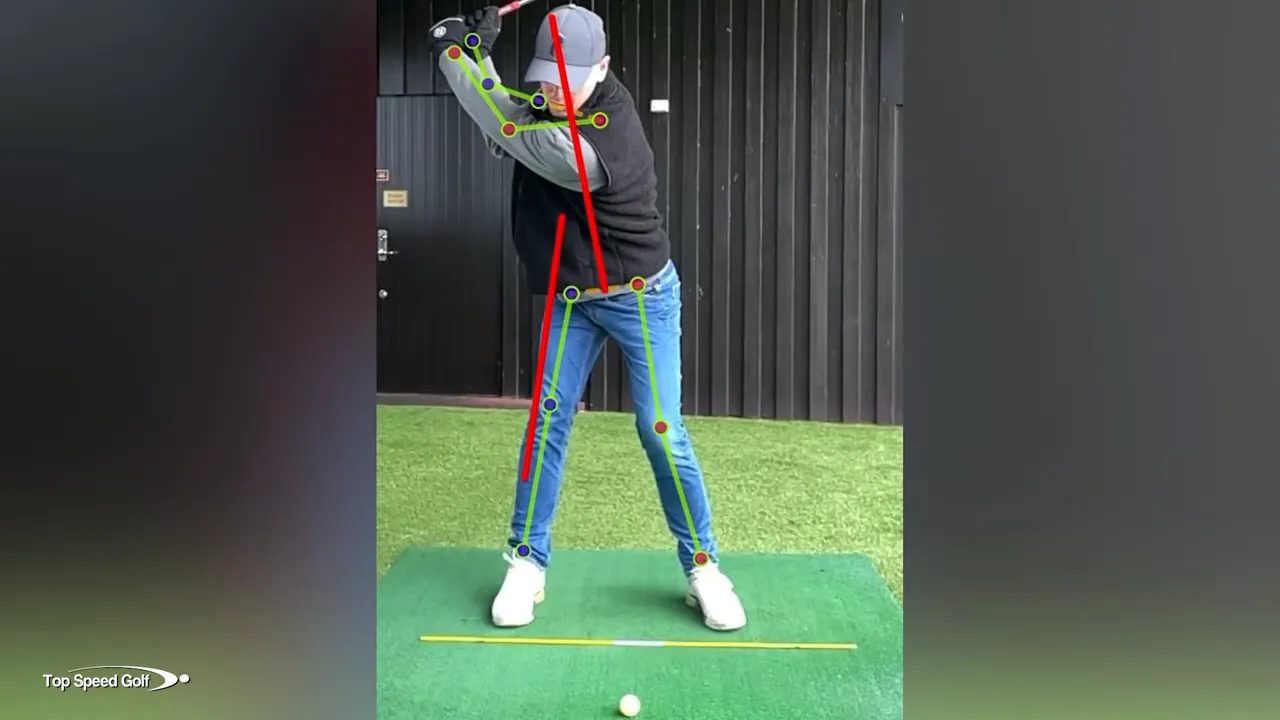
Structure Your Practice Sessions
Create a routine with purposeful repetitions to instill lasting changes:
- Warm up: 5 minutes of short swings with a wedge.
- 10 minutes: Perform 20-30 backswing-only stick drills, focusing on maintaining contact.
- 10 minutes: Progress through half to full swings, capturing video for additional feedback.
- Cooldown: Use drills encouraging balanced finishes and committed turns.
Executing this twice a week will quickly refine your swing stability and ball striking skills.
Troubleshoot Common Mistakes
Identify and manage typical errors that hinder stability progress:
- Over gripping: Relax to prevent leg compensation.
- Preventing rotation: Permit hip and knee to rotate while maintaining leg stability.
- Rushing: Start slowly for consistent form before adding speed.
- Premature gaze shifts: Maintain head and spine angles.
If issues persist, revert to the stick drill, focusing on more deliberate repetitions before increasing pace.
How This Move Improves Your Driver
This drill enhances mechanics by letting your back leg remain in place, prompting a hip rotation instead of a slide. Stable hips lead to a firm upper body and consistent swing plane, minimizing driver face instability and undesirable flips at impact.
Correction ensures a firm base, leading to better swing dynamics and results.
Advanced Drill Variations
Advance your training with these variations:
- Dynamic holds: Utilize a two-second top hold to reinforce stability.
- Resistance bands: Incorporate bands to marry power with pelvic control.
- Impact speed drills: Focus on impacts at reduced speed, later increasing as stability improves.
These increase proficiency under load, mimicking real-game pressure scenarios effectively.
Cues for Practice and Golf Rounds
Adopt simple cues to solidify movement patterns:
- Visualize leg boundary ‘fence.’
- Consistently hold spine angles.
- Rotate, do not translate — a reminder for clean turns.
- ‘Mid-thigh stick contact’ — reinforcing leg position.
These cues simplify complex mechanics, aiding consistent, positive reinforcement.
Video & Metrics for Improvement
Monitor your progress with these tracking methods:
- Weekly video reviews ensuring correct leg-placement.
- Analyze spine tilt consistency.
- Observe improved driver stability via consistent ball trajectory and distance.
Regular metrics ensure that incremental changes translate into significant performance gains over time.
Build Long-Term Habits
Integrate these drills into ongoing training to sustain gains:
- Conduct dedicated sessions focusing on stick and transfer drills.
- Emphasize cues during course play weekly.
- Monthly video confirmations under varying conditions.
Adherence to these practices ingrains movements into your primary golfing habits.
FAQs
How do I know if hip sway is causing my driver flip?
If you notice instability at impact with a flipped clubface, hip sway could be the cause. Record a down-the-line video to check if your back leg moves forward excessively, shifting your spine tilt forward at the top of the swing. Correct back leg placement aids in stabilizing your swing and reducing flips.
Can this drill help short game or only the driver?
This drill not only impacts your driver but benefits all club swings by encouraging a stable base, which is critical for consistent contact and directional control with any club.
What should I do if I feel restricted when stabilizing my back leg?
Restrictions often occur from excessive efforts to stop rotation. Allow hips and knees to rotate within constraints. If limitations persist, incorporate dynamic stretching and mobility exercises to enhance comfort.
How many reps should I perform with the stick?
Perform 20 to 30 quality backswing-only reps, focusing on rotation. Follow with 10 to 20 practice swings without the stick. Prioritize form by checking your progress through periodic video feedback.
Can a chair replace an alignment stick?
Yes, as long as it provides mid-thigh feedback, a chair is a suitable alternative. Choose any safe device that offers the necessary feedback to ensure proper leg positioning.
When will I see improvement in my golf ball flight?
Notable changes in feel and stability can occur within several sessions. Changes in ball flight and control commonly manifest after consistent practice over one to three weeks.
Will the drill alleviate lower back pain?
Stable movements often relieve strain from compensatory actions that might exacerbate back issues. It’s wise to consult a medical professional before beginning any regimen if existing pain is present.
What feel is most important during the swing?
Maintain the sensation of a stationary back leg as your torso and hips rotate. Visualizing ‘rotation in place’ rather than a slide promotes more stable and repeatable swings.
Final Thoughts and Next Steps
This back leg drill not only stops detrimental hip sway and reverse pivot in your swing, but also enhances spine angle stability and clubface consistency at impact. Built around fundamental mechanics requiring minimal setup, it offers noticeable improvement in performance.
Begin with an alignment stick at mid-thigh, focus on 20 methodical backswing reps, then transition to full swings with the ‘fence’ feel. Weekly video check-ins can guide your progress, ensuring you entrenched these enhancements for lasting results.
Commit to the practice, use effective cues, and experience the transformative difference this discipline can make on your game.

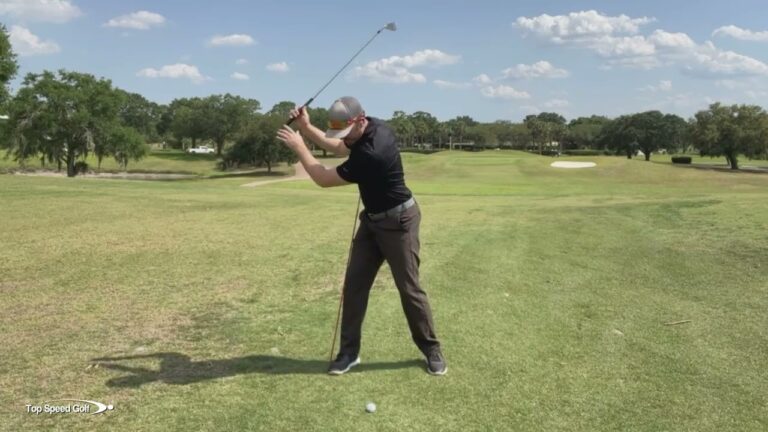
0 Comments